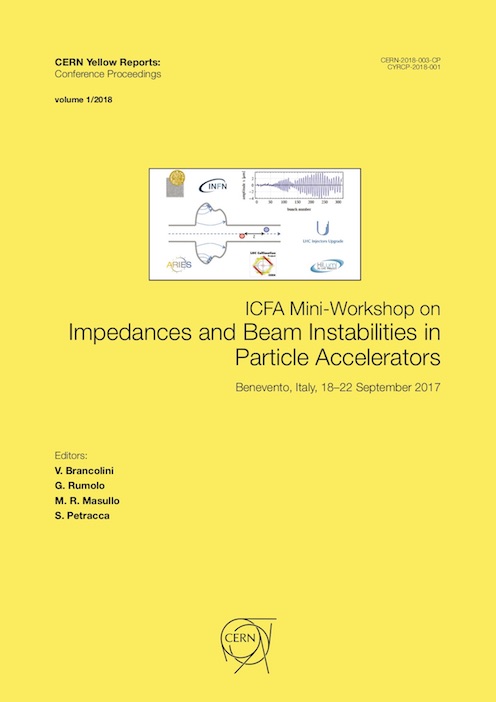The future of the E-P Instability in the SNS Accumulator Ring
DOI:
https://doi.org/10.23732/CYRCP-2018-001.45Keywords:
Accelerators, WorkshopAbstract
Concerns about the e-p instability drove many decisions during the design of the accumulator ring for Oak Ridge’s Spallation Neutron Source. To date, these decisions seem justified since e-p activity has been observed at the mm scale as a broadband transverse excitation, but it has not been a limiting factor (or even a contributor to normal losses) during operation up to the design power of 1.4 MW. However, the proton power upgrade (PPU) [1] will increase beam energy from 1.0 GeV to 1.3 GeV to allow 2.0 MW operation on the first target station, and eventually the Second Target Station project (STS) [2] will require an increase in beam current in the ring of about 50% above current operation resulting in 2.8 MW beam. This paper explores the potential for e-p induced beam instability during PPU and STS operation, the predicted effectiveness of existing e-p mitigation measures in the SNS ring, and potential experiments to test these predictions within current operational limitations.
Downloads
Published
Issue
Section
License
Authors who publish with this publication agree to the following terms:
- CERN retains copyright and publishes the work licensed under the Creative Commons Attribution License 4.0 that allows others to share the work with an acknowledgement of the work's authorship and initial publication in this series.
- Authors are able to enter into separate, additional contractual arrangements for distribution of the published version of the work (e.g., post it to an institutional repository or publish it in a book), with an acknowledgement of its initial publication in this series.
- Authors are permitted and encouraged to post their work online (e.g., in institutional repositories or on their website) prior to and during the submission process, as it can lead to productive exchanges, as well as earlier and greater citation of published work (See The Effect of Open Access).

